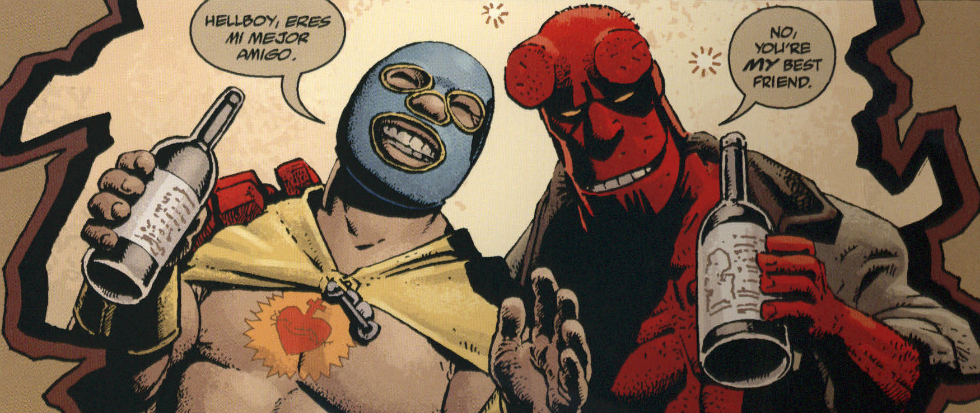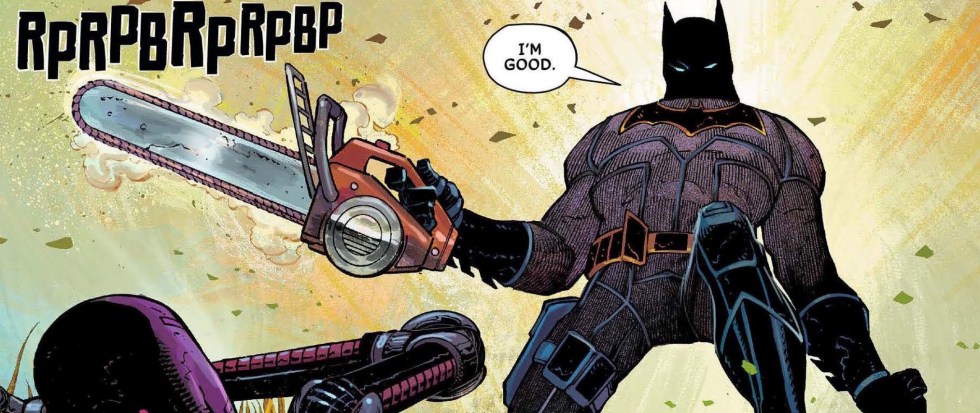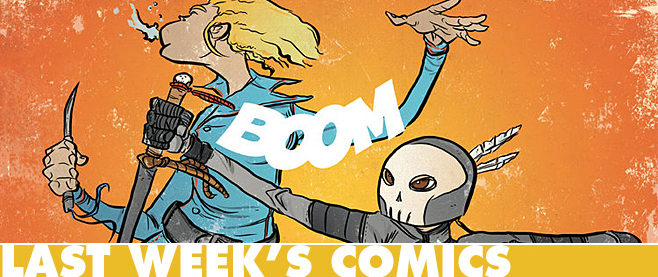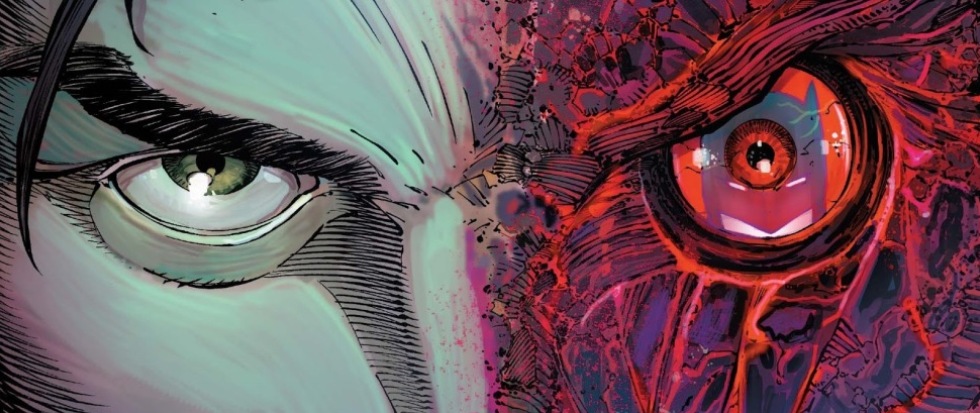
Last Week’s Comics 9/21/2016
Hellboy and the B.P.R.D. 1954: Black Sun #1
(Dark Horse—Writers: Mike Mignola, Chris Roberson Artist: Stephen Green)
I’m happy to see that Dark Horse is moving forward with telling more tales from Hellboy’s lost decades. The last collection of stories was a lot of fun, and not grounded in the heavy continuity and doom of the current B.P.R.D. series, not that there’s anything wrong with those things.
It’s refreshing to see a fun take on Hellboy, and what this series seems to be accomplishing as a whole is the revelation of more about the supernatural world of Hellboy. And in this issue, we’re expertly faked out.
The Thing is one of my favorite horror films. Sometimes my favorite horror film. For most of this issue I thought to myself: “Wouldn’t it be interesting if this Black Sun storyline is like a ‘Hellboy in The Thing’ scenario”? By the end you think this is going to be the case, and in the process introduce an  element that hasn’t been introduced in the Hellboy mythos yet.
element that hasn’t been introduced in the Hellboy mythos yet.
Instead it does it delivers its own wonderful twist that suits the world creator and co-writer of this issue Mike Mignola, which many affectionately refer to as the “Mignolaverse”.
The story begins with Hellboy and his B.P.R.D. associate Woodrow Farrier landing on Fletcher’s Ice Island in the Arctic Ocean.
They rendezvous with the remnants of the scientists and military personnel up in the base, who have been under attack by a monstrous creature out in the tundra. This clearly a story set in 1954; all the remaining inhabitants of this island are all men, and the resounding majority can’t handle the reveal of Woodrow being African American.
It’s an unfortunately accurate detail that Mignola and co-writer include in to help remind the reader that this is a slightly different Hellboy tale that takes place in the 1950s.
It’s a 1950s where people are fine with a crimefighting and ghostbusting demon with a large right hand, but not with someone who isn’t Caucasian.
Stephen Green’s art is fantastic in this issue. He does well conveying the fact that Hellboy is still not the fully formed man that we were first introduced to years ago. There’s a skinny gawkiness to him that makes his assertions like, “When you’ve been in the field as long as I have, you’ll understand” quite comical.
Also, this Hellboy smokes cigarettes, another unfortunate reminder that it’s the 1950s; a time when smoking was more prevalent. Even Hellboy had to switch to cigars and change up his habits eventually. Although, sometimes I wonder if many of his mannerisms aren’t just him acting like what he believes a tough guy should do.
There’s a great monster battle in this issue with a callback to the giant dog issue of the “Beyond The Fences” issue of Hellboy and the B.P.R.D. 1953 that I reviewed in April. This is the point where the story takes a weird turn.
So far these flashback comics have been more self-contained, but with this series it looks like young Hellboy is taking on a slowly building threat. I’m curious if the reveal at the end of this issue will open a new door for future stories in the Mignolaverse, and I’m eager to find out.
Michael Edwards
All-Star Batman #2
(DC Comics – Writer: Scott Snyder, Artist: John Romita Jr.)
I’ve been chomping at the bit to get back on a Snyder Batman. I was a big fan and I’ve expressed my disappointment with Tom King’s run in other prior editions of LWC. And, two issues in, it hasn’t disappointed.
All-Star Batman has had some of what made “Zero Year” such a success; the feel of a “Batman laid bare” story. Bruce is out an island. No allies, no vehicle and an unending stream of villains that seem to pop out of DC back issues AND from all corners. When was the last time we saw Cheshire? Or KGBeast? Or Amygdala? Also, a new Copperhead appears in perhaps a nod to Arkham Origin’s sole good idea.
It’s also a road story of sorts. Inserts keeps reminding us what mile marker we’re at. How far away from Gotham we are. The issue starts around marker 156. It ends fifteen miles later. 288 miles to go.
But despite the reminders it never feels as though Snyder himself has any urgency to get there.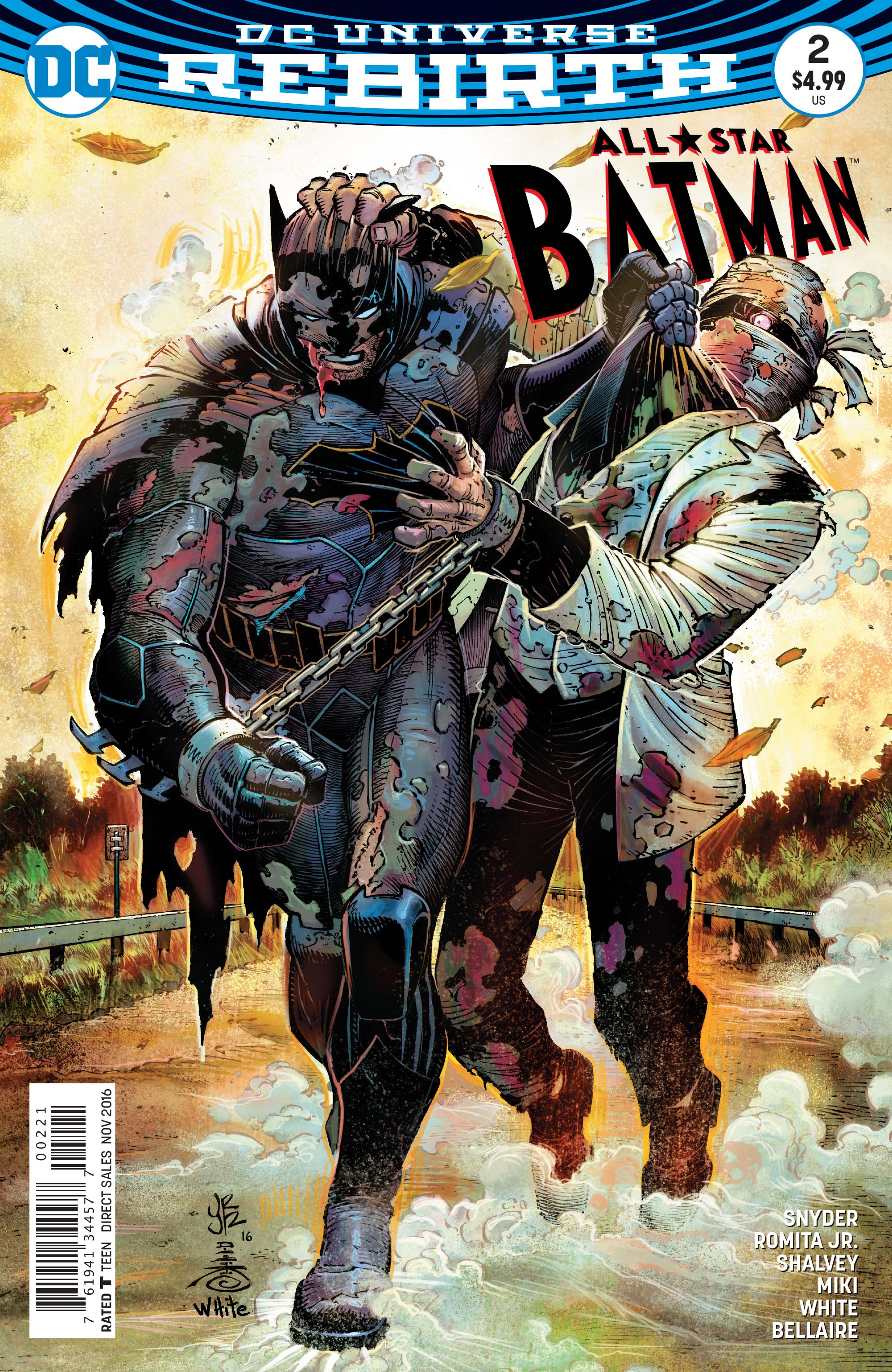 He can take his time. Batman might have urgency, and Two-Face may want to immobilize him, but Snyder can do as he pleases.
He can take his time. Batman might have urgency, and Two-Face may want to immobilize him, but Snyder can do as he pleases.
And that’s for the best. So much of Snyder’s work has been tied up in the conflation of Batman and Gotham that forcing him outside the city is a breath of fresh air.
And it’s working. There’re no auxiliary Batcaves to resupply at. There’re no safe havens at the tops of tall buildings. It’s all new territory for the Bat, and the folks reading it.
However, that’s not reflected in the artwork. John Romita Jr. often chooses close ups, snappy panels that really drive the action.
He establishes a scene and gets right into the meat. The effect is a symphony of visual noise that really ratchets up the stakes. When he goes long, it’s because something is blowing up. It’s great.
Major tip of the hat to colorist Dean White as well. White does all sorts of amazing things to make characters really pop. It’s a masterclass in what contrast can do and in visual storytelling. I was tepid on the Batsuit redesign, but the art team of Romita, Danny Miki and White have absolutely sold the thing.
Speaking of visual storytelling, remember how much I loved Injection? Well, it’s art team also does the backup story, The Cursed Wheel. It’s a bit overwritten at times, but it’s stunning and a welcome addition to the mythology of The Batman.
Look at it, touch it, smell it, get as close as possible as you can to it because it’s great. Declan Shalvey and Jordie Bellaire are some of the best in the business and it shows, enough that it’s almost worth it just to buy All-Star Batman just to get The Curse Wheel. Almost.
David Shimomura

